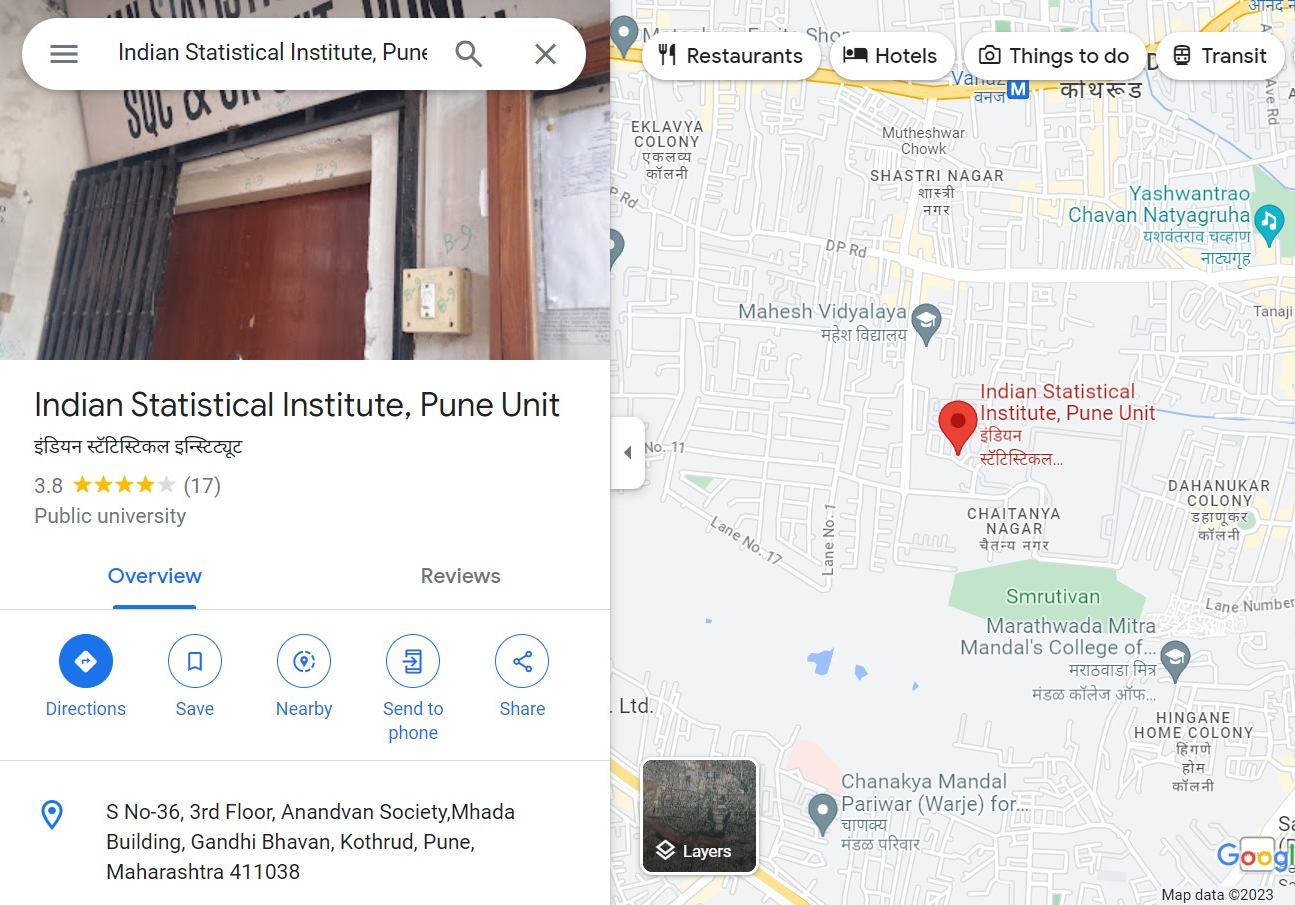Indian Statistical Institute, Pune
We are a part of the Indian Statistical Institute and use statistics, operations research, and other quantitative methods to help businesses solve their problems. The institute’s main activities are teaching, training, and consulting in Six Sigma, the use of statistics, management systems (ISO-9000, TS-16949, ISO-14000, and Integrated management systems), human resource development programs, statistical services (such as surveys) and teaching an organization how to think statistically.
Lead Faculty
The person in charge of the SQC & OR unit in Pune is Subrata Rath, who has an M.Sc., a PG Dip. in SQC & OR, and is a Fellow in the Specialist Development Program. More than 20 years of experience teaching, training, and consulting in TQM, Management Systems, Six Sigma, and HRD projects for many big Indian companies. He has worked with at least 50 different types of businesses and led more than 1000 Six Sigma projects.
Indian Statistical Institute
It is an institute run by the central government that does study, teaching, and practical work in statistics and related fields. It also works with the natural and social sciences and how they relate to statistics. There is an Act of Parliament from 1959 that makes it an INSTITUTE OF NATIONAL IMPORTANCE.
By virtue of this, It is:
- college or university that can give out degrees like B.Sc., B.Math, M.Sc., M.Tech., and Ph.D.
- a group of consultants who help businesses in both the service and manufacturing areas make more money.
- a place in the middle of national and international study promotion.
Its main office is in Kolkata, and it has centers all over India.
Important Goals
These are the Institute’s main goals:
to encourage people to learn about statistics and share what they know, to improve statistical theory and methods, and to find new ways to use them in research and everyday life, especially when it comes to planning for national growth and social welfare.
to do study in different areas of the natural and social sciences so that Statistics and these other fields can grow together;
to plan for and carry out the gathering of data, investigations, projects, and operational study in order to make better decisions and make management and production more efficient.
History
The Institute started in 1931 in a small room in the Presidency College. It now has major centers in Kolkata, New Delhi, Bangalore, and Chennai, as well as Units in Pune, Hyderabad, Mumbai, and Coimbatore, all over India.
In 1931, there was only one part-time human “computer.” Today, there are over 250 faculty members, over 1,000 support staff, and many personal computers, workstations, minicomputers, supermini computers, and mainframe computers. Even though these numbers are impressive, they don’t show how far the Institute has come, how many things it has done, or how closely it is connected to the life of the country.
Institute’s Formal Journey
It was sometime in the 1920s that Mahalanobis set up the Statistical Laboratory in the Presidency College. The Institute was set up as a learned society on December 17, 1931, and it was housed in the Statistical Laboratory. The Institute was first registered as a non-profit sharing learned society on April 28, 1932, under the Societies Registration Act (XXI of 1860).
It is now registered under the West Bengal Societies Registration Act XXVI of 1961, which was changed in 1964. It was Sir R.N. Mookerjee’s choice to be President of the Institute, a job he kept until his death in 1936.
Recognition of Statistics as a Key Discipline in India
In India from the 1920s to the mid-1930s, Mahalanobis did all or almost all of the statistical work by himself at the Institute. Early statistical studies looked at information about the heights of Anglo-Indians, the weather, rainfall, the state of the land, and other things. Some of the early studies’ results had a big effect on how storms were controlled, how farming improved, and other things. This led to Statistics becoming known as an important field of study.
Services
One part of ISI is the Indian Statistical Institute Pune, which uses statistics, operations research, and other mathematical methods to help businesses solve their problems. The main things that ISI Pune does are
I teach, train, and give advice in the following areas:
- How Statistics Are Used
- Using Six Sigma
- System for managing things (ISO-9000, TS-16949, ISO-14000, Integrated management system)
- Initiatives for developing human resources
- Statistical services, like surveys, teach a company how to think statistically and do other things like that.
Training Programs
We currently offer the following training modules, which can be held in open house (general) or in a plant that is specific to a company.
Six Sigma Programs
- Executive Overview of Six Sigma
- Champion Program
- Master black belt in Six Sigma
- Black belt
- Green belt
- Yellow belt
- Lean Six Sigma
- Design for Six Sigma
Special Programs
- Basic Seven Tools
- New Seven Tools
- Quality Function Deployment (QFD)
- Design of Experiments (DOE)
- Failure mode and Effect Analysis (FMEA)
- Statistical Process Control (SPC)
- And others as per industry/organization specific requirements
Indian Statistical Institute, Pune Contact Details-
